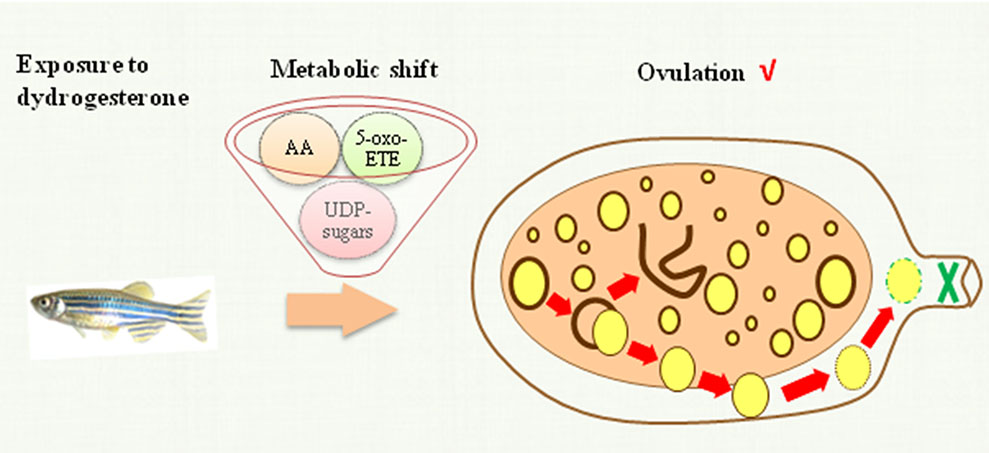Yu-Xia Jiang, a joint-PhD student of Professor Guang-Guo Ying (SERI) and Professor Choon-Nam Ong (National University of Singapore), recently published a research article titled “Dydrogesterone exposure induces zebrafish ovulation but leads to oocytes over-ripening: An integrated histological and metabolomics study” in Environment International. This research found that Dydrogesterone (DDG) exposure induced zebrafish oocyte maturation and ovulation but led to oocytes over-ripening via the AA metabolic pathway and purinergic signaling. It's worth noting that our recent study published in Environmental Science & Technology showed the androgen effect of DDG on fish.

DDG, one of the mostly consumed synthetic progestins in many countries, is used in a wide range of gynecological conditions. DDG is an endocrine disruptor, attracting great attention in environment studies. Our recent study showed that after 140 days of exposure to 329 ng L−1, 98% of the fish were males, and accelerated sperm maturation in zebrafish. Meanwhile, this research investigated the underlying mechanisms for the effects of DDG on sperm maturation in zebrafish by microarray analysis. However, there is a gap to fully understand the mechanisms of the effects of DDG on fish, especially with respect to small molecular metabolites.
Jiang et al. studied the histological changes and differences of metabolome between exposed and control fish gonads after exposure of zebrafish embryos to DDG until sexual maturity for a total of 140 days. Dydrogesterone exposure led to male-biased zebrafish sex ratios. Ovarian metabolome showed that DDG induced oocyte maturation, promoted ovulation but led to oocytes over-ripening through metabolites in arachidonic acid metabolic pathway and purinergic signaling, which were consistent with the results of histological examination (high frequency of postovulatory follicles). Shi and Jiang et al. used the transcriptome and metabolome analysis to investigate the effect of DDG on the spermatogenesis in testis and ovulation in ovary in zebrafish, respectively, which is important to assess the ecological risks of DDG in the environment in fish.

Reference
1. Shi, W.J., Jiang, Y.X., Huang, G.Y., Zhao, J.L., Zhang, J.N., Liu, Y.S., Xie L.T., Ying, G.G., 2018. Dydrogesterone causes male bias and accelerates sperm maturation in zebrafish (Danio rerio). Environ. Sci. Technol. 52, 8903−8911.
full text link:
https://pubs.acs.org.ccindex.cn/doi/10.1021/acs.est.8b02556
2. Jiang, Y.X., Shi, W.J., Ma, D.D., Zhang, J.N., Ying, G.G., Zhang, H., Ong, C.N., 2019. Dydrogesterone exposure induces zebrafish ovulation but leads to oocytes over-ripening: An integrated histological and metabolomics study. Environ. Int. 128, 390−398.
full text link:
https://authors.elsevier.com/sd/article/S0160412019301503